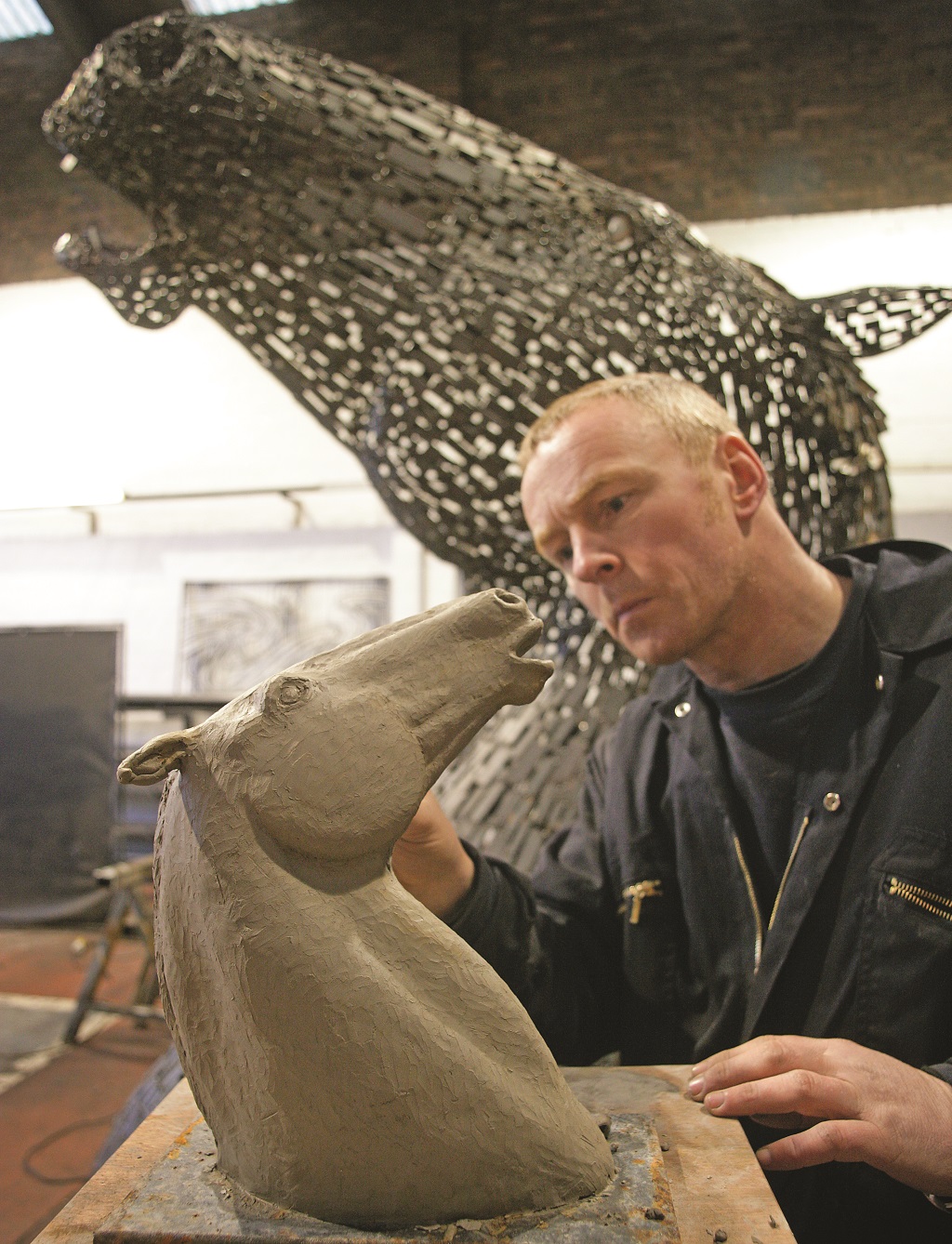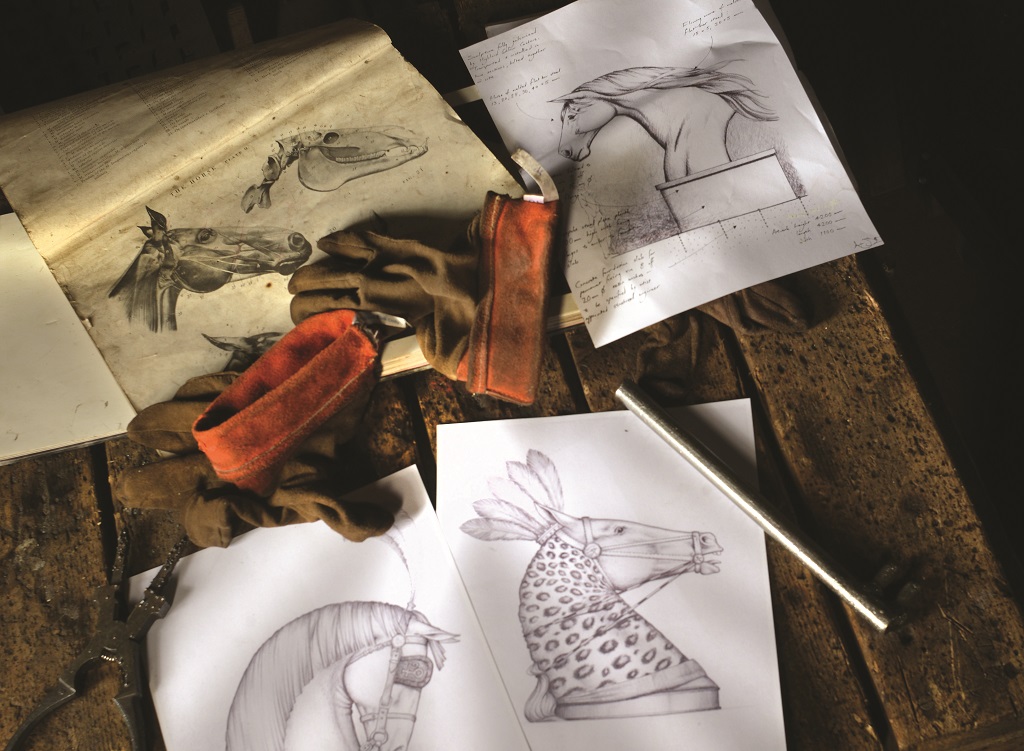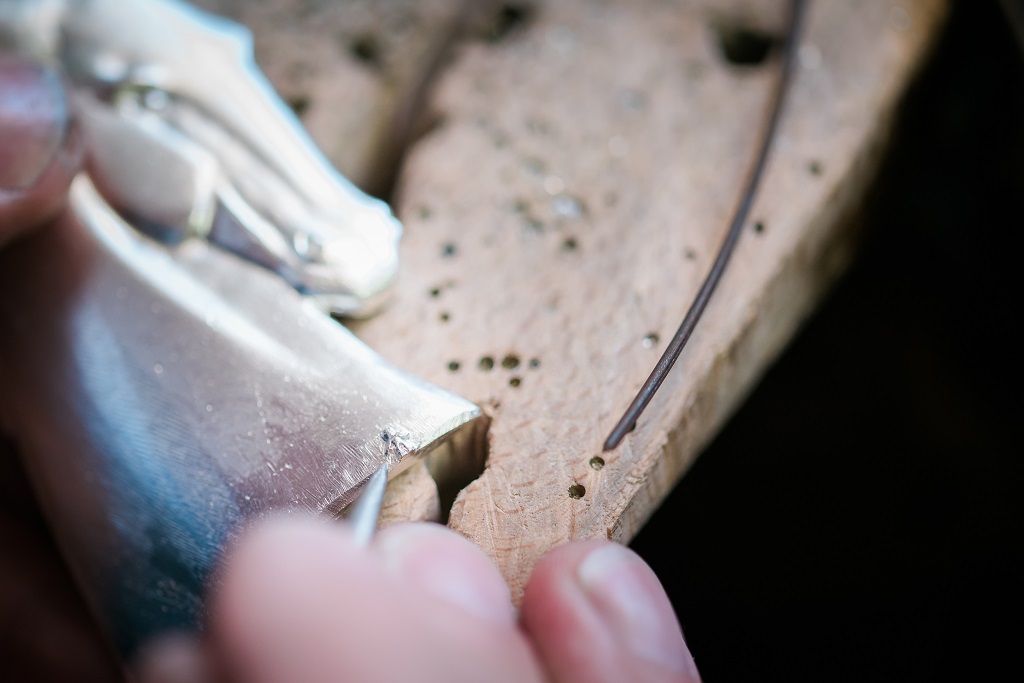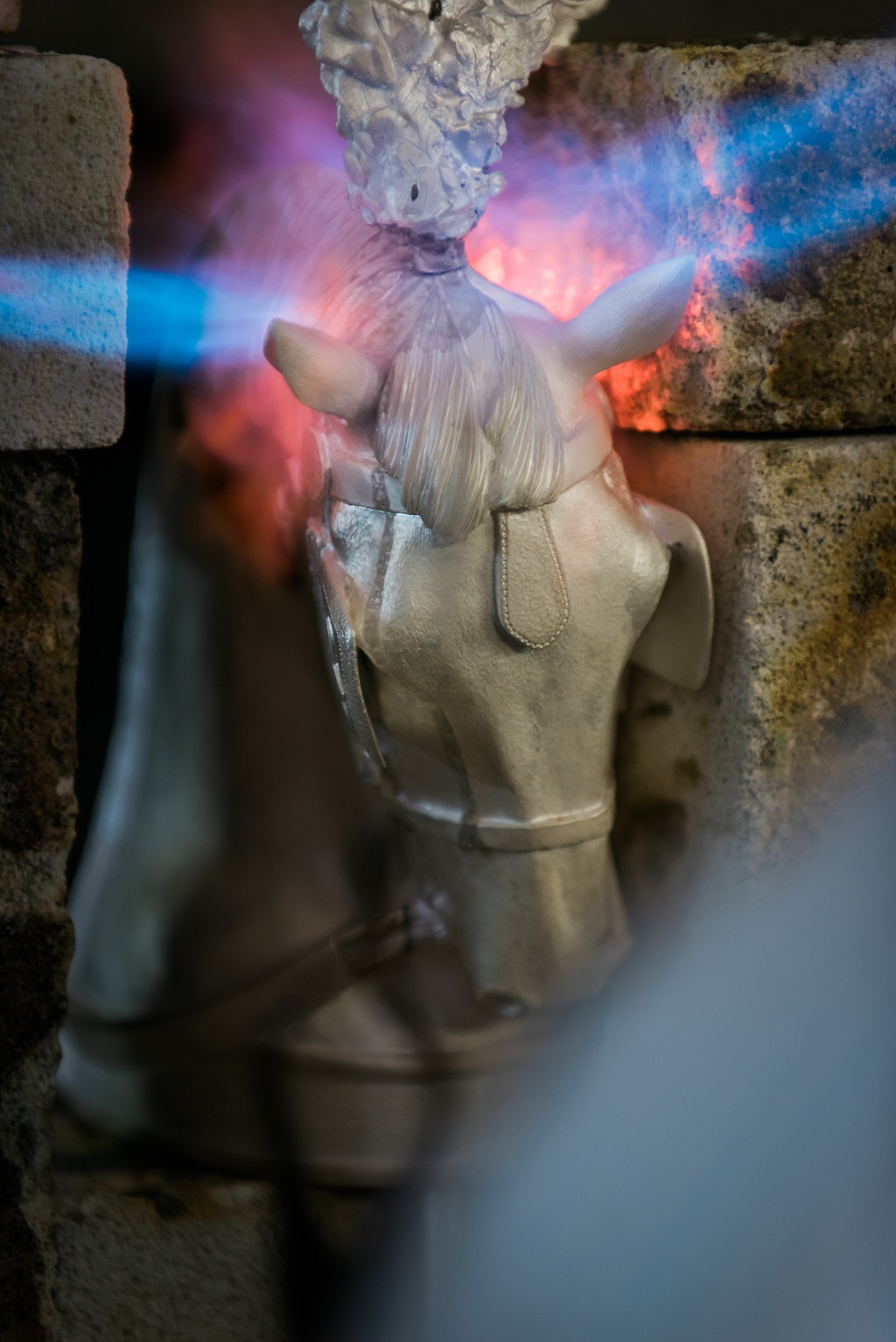
There’s more horse power to the Kelpies’ creator
The Scottish sculptor behind the Kelpies has masterminded the design of an equally unique silver equine chess set.
Sparks fly and there’s a whiff of singed steel hanging in the air of Andy Scott’s Glasgow studio as he welds together the wire armature of what will eventually be a horse. This is hardly surprising.
Since Scott shot to international fame with his iconic sculptures of the Kelpies on the Forth and Clyde Canal at Falkirk, he says the horse commissions keep coming in.
‘There are many sculptors around the world who exclusively make horses and if you look at the history of art it’s a great tradition to be part of. I’m just humbled that people appreciate my efforts in this field.
‘My first public art project was the Heavy Horse on the M8 and I was recently in Kentucky, the home of the horse, to talk to the International Museum of the Horse about a commission, which is very exciting.’ However, Scott’s most ambitious and prestigious project to date is his collaboration with Hamilton & Inches to make an exquisite hand-sculpted sterling silver equine chess set.

Andy Scott in his studio
The Edinburgh artisan jewellery house conceived the Game of Kings project as part of its 150th anniversary celebrations. It combines the spirit of Scott’s Kelpies – the largest equine sculptures in the world – with the remarkable craftsmanship of the master silversmiths at Hamilton & Inches.
The first piece to be produced so far is the 12in-high silver bishop, and both parties are hugely excited by the results, says Scott. ‘It has been a very harmonious, rewarding experience and a mutual love-in. The silversmiths from the workshop came through to my studio and I visited theirs and we both walked away saying, “How do they do that?”’
Scott says the process of making the bishop has been a valuable learning curve for both parties which will help streamline the process when they come to make the other pieces. ‘To start with I made a clay version of the bishop, which was then cast in bronze by the Powderhall Foundry. I then handed it over to Jon Hunt and his team at Hamilton & Inches to work their juju, or magic, on it.

Design sketches for the chess set
‘The detail they’ve achieved is astonishing and the level of craftsmanship is just mind-boggling. Now I know the skill level they have, I can leave some of the finer details in their capable hands rather than overworking things on my side of the sculpting.’
Jon Hunt, technical manager at Hamilton & Inches, says the main skill in reproducing Scott’s sculptures is making sure the proportions are right and preserving the essence of the original design. ‘When you see the silver bishop alongside the bronze, if you study it carefully there’s lots of differences in textures and finishes, but not the essence – essentially they’re the same piece.’
While the chess pieces will feature different types of horses, the poses echo those of the Kelpies. When asked why he started with the bishop first, Scott chuckles and confesses it was because he’d always fancied making a plumed horse.
‘I decided to give the bishop an ecclesiastical feel and thought of the horses used in celebratory roles such as weddings and funerals. During my research I found the old alchemy symbol for silver. I’ve put it on the horses’ blinkers, which is a nice touch.

Attention to detail on the Hamilton and Inches chess set
‘The horse is deliberately posed in the solemn respectful attitude you might associate with being ecclesiastical, but people are free to make up their own narrative.’
In June 2016 when the silver bishop was displayed as part of his New York exhibition, Scott was astonished by the reaction. ‘When the bishop was unwrapped it was like unveiling the holy grail – you could almost hear the angels singing. It was partly because of the lighting in the gallery, but it really glowed. It was pheno menal. People gasped, as it wasn’t quite what they expected. It was a lovely reveal.’
Already there is interest from collectors, especially horse enthusiasts, in commissioning the entire silver chess set, which would sit on a bespoke table of wood and leather designed by Scottish cabinetmakers Method Studio. Scott has already made a 14ft-high galvanised steel version of the rook, which was displayed outside Hamilton & Inches’ showroom in the summer.
During his research on chess, Scott discov-ered that rooks in early Persian chess sets were based on chariot horses and this is reflected in the feathered headdress and leopard-skin neck-piece of his rook. He plans to make the knight a war horse with armour, while the pawns will be nimble, fleet-of-foot ponies similar to small Etruscan horses. For the time being, though, Scott plans to leave the designs for the King and Queen open-ended.
‘We would like to offer the individual client the opportunity to have an input into the designs – for instance, images of their own horses, which we could then render. My own thinking is that they would be champion breeds, an Arabian thoroughbred, a big Percheron, Shire or Clydesdale horse, which we could then customise to add a personal touch.’

The beautiful chess piece
Scott is delighted that the Hamilton & Inches collection of various horse-inspired items will give people the opportunity to own smaller versions of his sculptures. Indeed, over the last couple of years, he has gone back to producing the type of smaller-scale clay and bronze pieces he made when he was a student at the Glasgow College of Art. These are the type of sculptures he normally produces only for the benefit of clients.
‘I’ll usually make some sketches but some clients also prefer to have a small-scale maquette. I’m so used to working with the physicality of the steel that if it was up to me I would go straight into making the piece as you can never replicate the finished effect in steel anyway.’
As a 3-D specialist, Scott has perfected his distinctive technique of welding together small individual pieces of chopped-up steel in what he describes as a very physical and laborious process. ‘Working with steel is fairly poisonous and unpleasant at the best of times, particu-larly in the middle of a dark Scottish winter, so I don’t know where that takes me psychologically,’ he laughs.
‘You need to get into the zone, so when I’m in the studio I turn up my music and switch off my brain. I usually start with classical or jazz and then rock music until I reach heavy metal at the end of the day – you can’t knock a bit of Zepplin and Deep Purple.’
Although Scott also produces large figurative sculptures, when asked what he would make if he was given free rein in a commission he doesn’t skip a beat. ‘I‘ve a real hankering to make a drum horse – the big Clydesdales with the massive kettle drums. There’s something about the juxtaposition of a good old Scottish agricultural working horse being used for the highest ceremonies in the land that appeals, and I think it would be a fantastic thing to produce on a large scale.’
As a work of art, the bespoke silver chess set is destined to become a highly sought-after collectors item.
Click HERE for more details on Andy Scott’s work.
This feature was first published in September 2016.
TAGS

